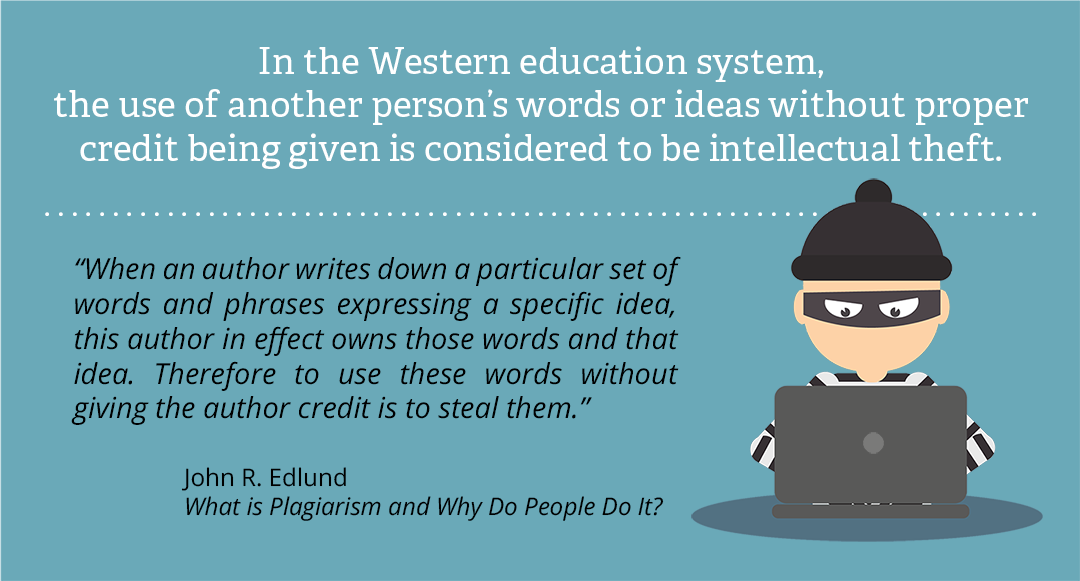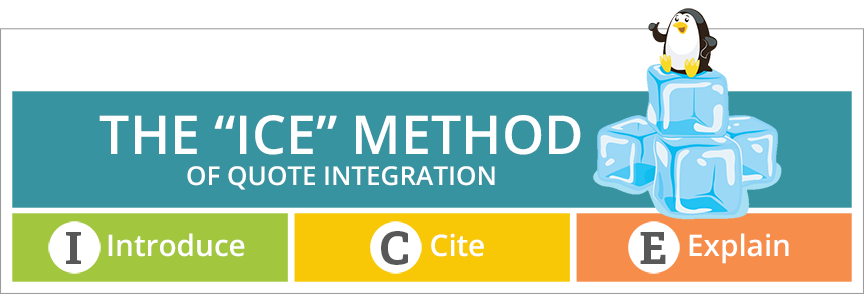Quote Integration
Introduction to Quote Integration: The ICE Method
A very important part of academic writing is knowing how to properly integrate quotes. As you learned in both the Basic Paragraph and Body Paragraph lessons, supporting details are a very important part of most writing situations. This is especially true when it comes to writing essays.
One of the most effective ways to support the points you are trying to make is through the use of “expert testimony” quotes. Many of you have likely already started using these types of supporting details in your own writing because you saw the power in it.
That being said, there is definitely a proper way to present “expert testimony” supporting details. Properly integrated quotes provide two significant benefits to your writing:
- They strengthen the overall thesis statement (and therefore the controlling idea of the essay)
- They help you do so in a way that avoids plagiarism
Plagiarism
Many of you may recognize the word plagiarism and know what it means. For some of you, this concept may be less familiar to you and maybe even a little bit confusing. To summarize, plagiarism is the use of another person’s words or ideas without giving them proper credit. On the surface, this might not seem like such a bad thing. After all, how many times a day do we share the thoughts and ideas of other people in our conversations with friends, family, and even coworkers? If we do it so often in informal conversations with others without negative consequences, why is it considered such a serious offense in the academic and university setting? The answer lies in the policies (rules) of the Western education system.
In the Western education system, the use of another person’s words or ideas without proper credit being given is considered to be intellectual theft. As John R. Edlund explains about intellectual theft in his article “What is Plagiarism and Why Do People Do It?,” “When an author writes down a particular set of words and phrases expressing a specific idea, this author in effect owns those words and that idea. Therefore to use these words without giving the author credit is to steal them.” He further explains that plagiarism is a problem for students in the Western education system because educators in this system “believe that writing is a visible, concrete demonstration of a writer’s knowledge, insight, and academic skill. Thus, to represent another person’s writing as your own is to misrepresent your own accomplishments.”

To summarize Edlund’s thoughts, the expectation of PathwayConnect courses and all others beyond it is for students to give proper credit for the words and ideas they are using in their writing. Giving proper credit will avoid intellectual theft (the stealing of another writer’s ideas). It is also the expectation of PathwayConnect courses and other university courses moving forward that students give proper credit for the words or ideas they use. This will ensure that their true knowledge, insight, and academic skill are properly represented in their writing.
The ICE Method
Now that you have a proper understanding of what plagiarism is and why it should be avoided, let’s turn our attention to how it can be avoided.
Many times, students plagiarize simply because they do not know how to properly integrate the words and ideas they find from other sources with their own words and ideas. While there are many ways this can be successfully done, this lesson will focus on teaching you one simple way of integrating source material. It is known as the ICE method.

The ICE method of quote integration has three basic steps:
- I: Introduce
- C: Cite
- E: Explain